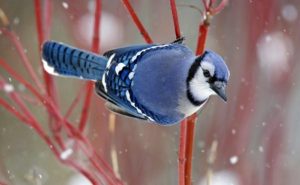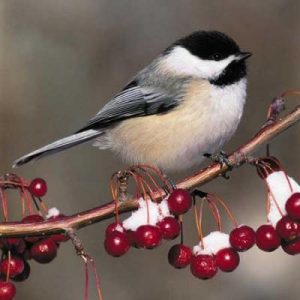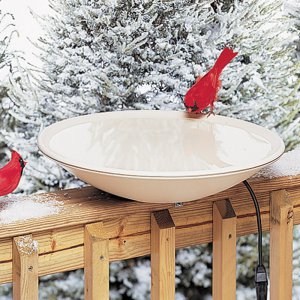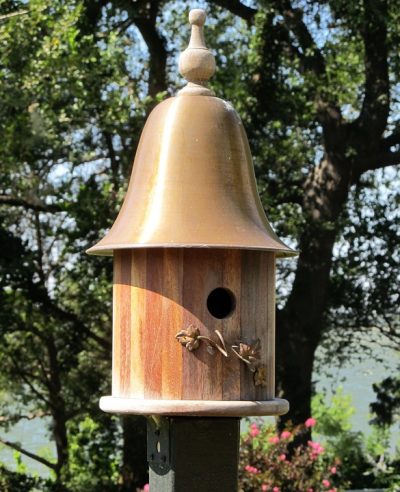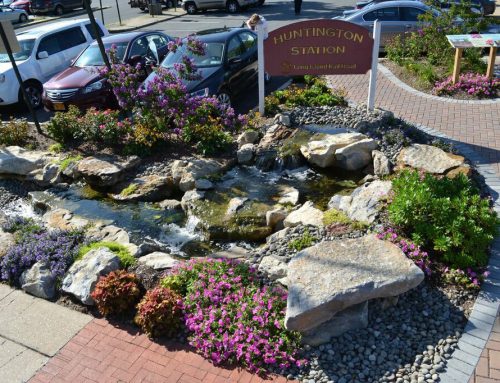Long Islanders, including many Deck and Patio clients, are strong environmentalists and nature lovers. And they are well aware of recent news reports that North America has lost 3 billion birds since 1970.
What may be news to some is that not all the loss has been among rare birds. One in four colorful blue jays, for example, have been lost, and we recommend a SC Times post that includes some great tips on a variety of ways we all can help.
News has not been all bad though. Because of conservation efforts, populations of waterfowl have increased in recent decades. However, even with the increase in waterfowl, the overall loss in birds does tug on the conscience.
Inviting Birds to Your Property
We may not have any snowy owls to protect, on Long island, but we can provide a safe habitat for lots of delightful birds — and birds of glorious color that can brighten our winter season.
Blue Jays, who do need help, are colorful birds that by nature are happy to stay around in winter. These avian friends love to congregate in groups come winter. They also will squirrel food away. Some have witnessed Blue Jays hiding nuts in trees.
We spoke with Sandra Vultaggio, Horticulture Consultant at the Cornell Cooperative Extension in Riverhead about attracting the Jays.
“If you want to help Blue Jays, they really like nuts and peanuts. I use a peanut wreath and fill it with shelled peanuts. This type of feeder attracts a lot of Blue Jays.”
They are also such fun to watch — not to mention they add a lot of color against a winter landscape.”
Cardinals
Consider how the bright red plumage of the Cardinal could cheer the dreariest of days while you’re helping to save birds overall. The male’s full-bodied red actually gets more striking during winter. This is when some of their remaining gray-tipped feathers fall off, showing even more vibrant red.
What a picture they make resting on icy branches and snow. “If you want to attract them, Cardinals love black oil sunflower and safflower seeds,” says Vultaggio.
It’s helpful to note that Cardinals usually eat early in the morning or late in the evening so make sure feeders are well stocked at these times. Also, being a larger bird, they prefer a larger feeder that won’t sway too much as they eat.
Chickadees
Chickadees prefer the same type of seeds as the Cardinal: black oil sunflower and safflower.
Vultaggio is also delighted by their sounds: “They actually say chickadee when they sing.”
Chickadees are vibrant even though, as part of the Titmouse family, they are known for their gray color and lighter bellies.
“They dine primarily on insects, seeds and berries,” adds Vultaggio.
“They are active and agile little birds. These little acrobats are a delight to watch when they hang upside down from twigs or at your feeder.
Extra Tips
1. Vulraggio also puts out suet in winter, which she says attracts other birds including woodpeckers.
2. Bird Baths are a great help to birds in winter
3. Put up bird houses designed for specific birds
A bird bath is important. Water is often scarce in the dead of winter.
Of course, you don’t want the water to ice up and there are lots of bird bath heaters, including solar heated bird baths.
Pictured immediately above is a Heated Deck-Mounted Birdbath by Allied Precision. “You’ll also find that in winter birds tend to appear in groups since many eyes make it safer to watch out for predators.”
Granted, wild birds may not exactly be pets. But it’s trendy to treat them like they are. So it’s not surprising that fancy bird houses are growing in popularity. Indeed, there are even awards for the best design in bird houses.
The point is, a bird house can be a reflection of your own style and tastes and certainly can be upscale, all while you’re aiding in bird conservation. Besides, if our avian friends are going to sing for their supper, they might as well be housed as nicely as we are.
It’s worth checking to learn what the birds you’re trying to attract require. For example, Blue Jays like to nest at least 10 feet off the ground so your birdhouse should be at least that high in a tree or pole. They like to use tree roots and small thin sticks to create a nest so you can place them nearby along with the food they prefer.
Birds are, indeed, such a wonderful way to add color to your winter garden. And it feels great to know you are helping in a very small way to reverse the trends of bird loss on our continent.
Note: Our feature photo at the top of the page is of a tit bird feeding on a tit ring.


